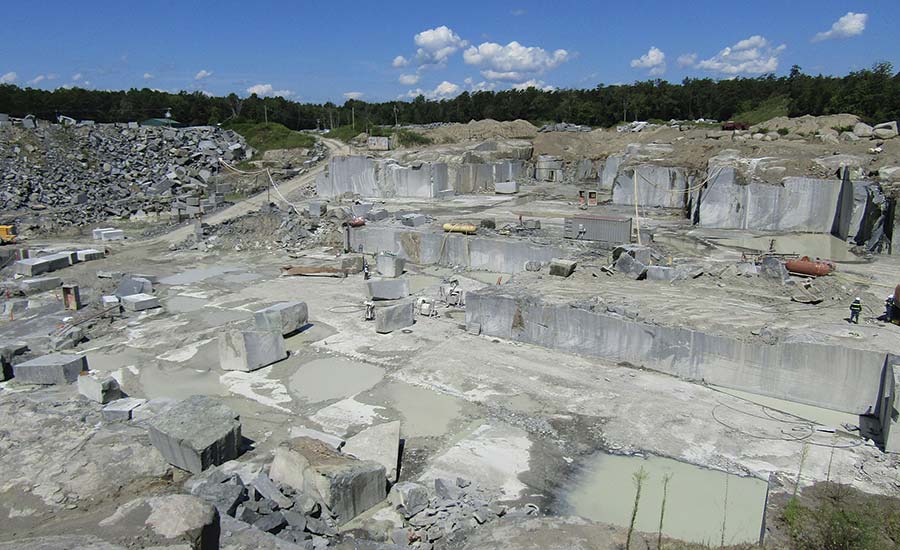Travelling With Granite Quarries in South Africa: A Visual Odyssey
Travelling With Granite Quarries in South Africa: A Visual Odyssey
Blog Article
Uncovering the Rich History and Sustainable Practices of Granite Quarrying
As we base on the precipice of discovering the complex tapestry of granite quarrying, a journey with time reveals not just the physical act of drawing out rock yet likewise the cultural and historic significance woven into the extremely textile of this method. From the old beginnings that laid the structure for contemporary quarrying methods to the sustainable methods that are shaping the future of this market, each chisel mark on granite surfaces tells a tale waiting to be unearthed (granite quarries in south africa). The tradition of granite quarrying stretches much beyond plain extraction; it is a testimony to human resourcefulness, resilience, and the enduring appeal of this stunning stone
Ancient Beginnings of Granite Quarrying
Dating back to old people, the technique of quarrying granite has been an essential part of human background and architectural advancement. The earliest evidence of granite quarrying dates back to ancient Egypt, where huge pyramids and intricate sculptures were crafted from this sturdy stone. The Egyptians utilized primitive devices to draw out granite blocks from quarries, showcasing the relevance of this product in their monumental constructions.
Moving ahead in history, the Greeks likewise made significant contributions to the quarrying of granite. The Greeks used granite in numerous architectural marvels, such as temples and statues, demonstrating their ability in shaping and carving this hardy rock. The Romans even more fine-tuned the techniques of quarrying granite, employing innovative devices like chisels and hammers to remove and form granite for their renowned structures.
Through the centuries, the technique of quarrying granite has developed, with modern-day innovations enhancing performance while keeping the timeless appeal of this natural stone - granite quarries in south africa. From old human beings to modern builders, the heritage of granite quarrying proceeds to shape our world
Advancement of Quarrying Techniques
The evolution of quarrying strategies has actually been marked by a continuous development towards greater effectiveness and precision in removing granite. From the primary approaches utilized by our forefathers to the innovative innovations utilized in modern-day quarrying operations, the market has undertaken considerable developments. Early quarrying strategies included manual work with basic devices such as chisels, hammers, and wedges to remove granite blocks from the earth. As human beings advanced, strategies like fire-setting and primitive dynamites were introduced to facilitate the extraction process.
In even more current times, the development of machinery changed the quarrying market, making it possible for much faster removal prices and enhanced efficiency. Technologies such as ruby wire saws, high-pressure water jets, and pneumatically-driven drills click to investigate have actually become common in modern quarries, permitting specific cutting and decreased waste. In addition, innovations in computer-controlled equipment and 3D modeling have enhanced quarrying procedures, leading to very little ecological influence and boosted sustainability techniques. As the need for granite proceeds to climb, the evolution of quarrying techniques stays indispensable to conference sector requires successfully and sustainably.
Social Relevance of Granite
Granite holds a profound social importance throughout different civilizations due to its long-lasting visibility in architectural work of arts and admired monoliths. The cultural significance of granite expands beyond its physical attributes; it symbolizes resilience, stability, and eternity, making it a symbol of sustaining legacies and practices.

Sustainable Practices in Quarrying
In the middle of the abundant history of granite quarrying and its social value lies a growing focus on lasting methods within the market. As ecological recognition and issues about source deficiency have heightened globally, the quarrying field has increasingly embraced sustainable techniques to More Help lessen its effect on the setting and surrounding areas.

Additionally, improvement and rehab of quarry sites post-extraction are important to lasting techniques. By recovering quarried locations to an all-natural or beneficial state, such as creating wild granite quarries in south africa animals habitats or leisure areas, quarriers can offset the environmental footprint of their procedures and add favorably to the regional environment.
Tradition of Granite Quarrying
With a historical background soaked in craftsmanship and industrial progression, what sustaining effect has granite quarrying left on the landscape of contemporary society? The tradition of granite quarrying transcends plain removal methods; it has formed architectural wonders, city landscapes, and cultural heritage worldwide. The resilient nature of granite has actually made it a favored selection for monoliths, structures, and framework, standing as a testament to the skill and artistry of quarry workers across generations.
Furthermore, the economic footprint of granite quarrying can not be forgotten. The market remains to offer job opportunity and drive regional economies in regions where granite removal is prevalent. It has actually likewise spurred technical improvements in quarrying techniques and devices, resulting in a lot more effective and lasting practices.
In terms of sustainability, the heritage of granite quarrying includes efforts to minimize ecological influences through improvement tasks and liable resource monitoring. By stabilizing economic rate of interests with ecological stewardship, the sector strives to make sure that future generations can remain to gain from this enduring natural deposit.
Final Thought

Report this page